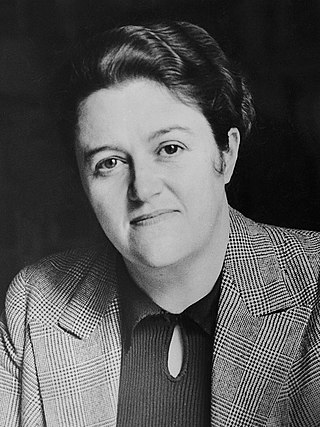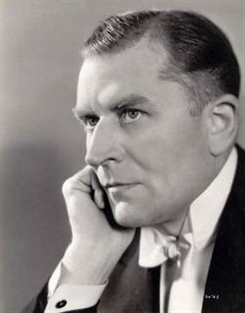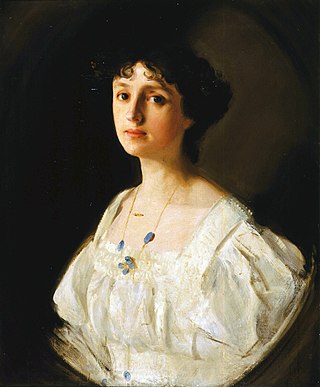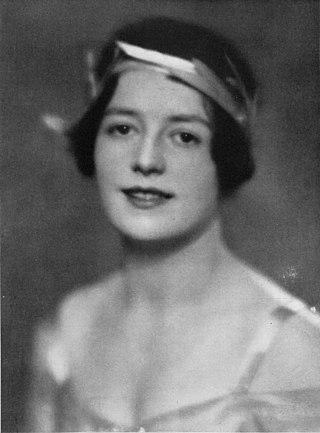
Virginia Lilian Emmeline Compton-Mackenzie,, known professionally as Fay Compton, was an English actress. She appeared in several films, and made many broadcasts, but was best known for her stage performances. She was known for her versatility, and appeared in Shakespeare, drawing room comedy, pantomime, modern drama, and classics such as Ibsen and Chekhov. In addition to performing in Britain, Compton appeared several times in the US, and toured Australia and New Zealand in a variety of stage plays.

A Bill of Divorcement is a 1932 American pre-Code drama film directed by George Cukor and starring John Barrymore and Katharine Hepburn in her film debut. It is based on the 1921 British play of the same name, written by Clemence Dane as a reaction to a law passed in Britain in the early 1920s that allowed insanity as grounds for a woman to divorce her husband. It was the second screen adaptation of the play; the first was a 1922 British silent film also titled A Bill of Divorcement. The film was made again in 1940 by RKO Pictures.

Marjorie Burnet Rambeau was an American film and stage actress. She began her stage career at age 12, and appeared in several silent films before debuting in her first sound film, Her Man (1930). She was twice nominated for the Academy Award for Best Supporting Actress for her roles in Primrose Path (1940) and Torch Song (1953), and received the 1955 National Board of Review Award for Best Supporting Actress for her roles in A Man Called Peter and The View from Pompey's Head.

Helen de Guerry Simpson was an Australian novelist and British Liberal Party politician.

Malcolm Keen was an English actor of stage, film and television. He was sometimes credited as Malcolm Keane.

Charles Bancroft Dillingham was an American theatre manager and producer of over 200 Broadway shows.

Dame Florence Lilian Braithwaite was an English actress, primarily of the stage, although she appeared in both silent and talkie films.

The Lunt-Fontanne Theatre, originally the Globe Theatre, is a Broadway theater at 205 West 46th Street in the Theater District of Midtown Manhattan in New York City. Opened in 1910, the Lunt-Fontanne Theatre was designed by Carrère and Hastings in the Beaux-Arts style for Charles Dillingham. The theater is named after theatrical couple Alfred Lunt and Lynn Fontanne; its original name was inspired by that of the Globe Theatre, London's Shakespearean playhouse. The current configuration of the interior, dating to 1958, has about 1,519 seats across two levels and is operated by the Nederlander Organization. The facade is a New York City landmark.

Victoria Hopper was a Canadian-born British stage and film actress and singer.

Fabia Drake OBE was a British actress whose professional career spanned almost 73 years during the 20th century.

Winifred Ashton CBE, better known by the pseudonym Clemence Dane, was an English novelist and playwright.

The Tunnel, also known as Transatlantic Tunnel in the United States, is a 1935 British science fiction film directed by Maurice Elvey and stars Richard Dix, Leslie Banks, Madge Evans, Helen Vinson, C. Aubrey Smith and Basil Sydney. It is based on the 1913 novel Der Tunnel by Bernhard Kellermann, about the building of a transatlantic tunnel between New York and London. The script was written by Curt Siodmak, L. du Garde Peach and Clemence Dane. The film, produced at a time when the threat of war loomed in Europe, emphasized international cooperation between the United States and the United Kingdom.

George Michael Cohan was an American entertainer, playwright, composer, lyricist, actor, singer, dancer and theatrical producer.

Margherita Cecilia Brigida Lucia Maria Albanesi was a British stage and film actress.

A Bill of Divorcement is a 1922 British silent drama film based on Clemence Dane's play A Bill of Divorcement. The film was directed by Denison Clift and stars Constance Binney, Fay Compton and Malcolm Keen.

A Bill of Divorcement is a 1940 film directed by John Farrow. It was also known as Never to Love and was based on a 1921 British play of the same name, written by Clemence Dane that was filmed in 1932 with John Barrymore and Katharine Hepburn.
A Bill of Divorcement may refer to:
Nigel Tasman Lovell was an Australian stage, radio, film and television actor, and producer of opera and both stage and radio drama.

Allan Pollock was an English actor. In the United States, he was known for stage appearances in Hawthorne of the U.S.A. (1912) and A Bill of Divorcement (1921). He joined the British armed forces in World War I in 1914, two days after war was declared, and rose to the rank of captain. In 1916 he was seriously wounded in the Ypres Salient and recovered in hospitals for more than three years and had eleven operations.

Georgia Ethelia Cohan Southern Rowse, known as Georgette Cohan, was an American actress, daughter of George M. Cohan and Ethel Levey. She played Peter Pan in London in 1919, and appeared in several Broadway productions.


















